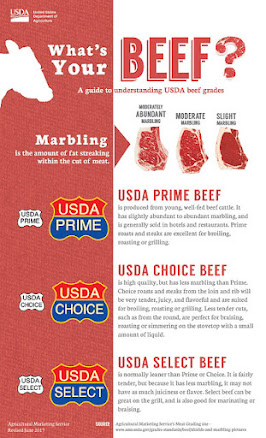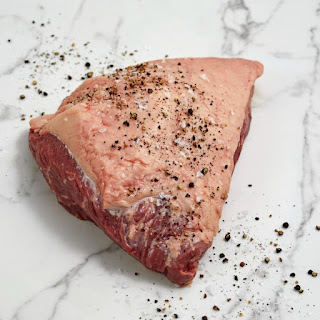Thursday, April 25, 2024
Sid's Diner El Reno, OK
Thursday, April 18, 2024
The Heart of It All
For anyone that has cooked, grilled, and smoked beef the past couple of years has been a roll of the dice. It has long been accepted that the majority of American beef has been Herford, but the best beef in the good old USA has been Angus, most notably Black. The past 20 years have changed that. Kobe beef from Japan is the revered best of the best.
Kobe beef is Wagyu beef from the Tajima strain of Japanese Black cattle, raised in Japan's Hyōgo Prefecture around Kobe city, according to rules. The meat is a delicacy, valued for its flavor, tenderness and fatty, well-marbled texture. Breeding for this meat is strictly controlled by the Kobe Beef Marketing and Distribution Promotion Association.
Now for the rest of us. For years and still Hereford Beef provides the majority of our American marketplace. First imported into the U.S. Certified Hereford Beef is a premium branded beef program built on the tradition of family farmers and ranchers across the United States. Established in 1995 by a group of Hereford producers, the Certified Hereford Beef® brand is the only Hereford beef brand in the industry owned by an alliance of local Hereford farmers and ranchers.
This beef helped the USDA establish quality standards for all beef produced in the US. It is important to put due weight on these standards when purchasing beef as this only applies to beef raised and butchered in the U.S. Imported meat will not display this. They do not state their standards. Something to think about.
About 100 years ago the U.S. began a swing thru the custom genetics of angus beef, black angus being the best. Angus is the name of the breed of cattle that was specifically bred from cattle indigenous of Scotland by a man named Hugh Watson in the mid-19th century. It is believed that nearly all the Black Angus cattle alive today came from the results of Watson's attempts to maximize the black hide of these animals. In the 1870s these cattle were brought to the United States and by the 1880s, the American Angus Association was founded.
Thursday, April 11, 2024
Solar Eclipse 2024: Now that's a photo bomb
Thursday, April 4, 2024
Easter: Pit & Grill
Easter is a great opportunity to fire up the wood pit and make a GREAT piece of meat. It's just Barb and I anymore and usually for us it's Leg O' Lamb, but this year we changed the game. We chose a very nice piece of Picanha. Not a well know piece of beef in this country it is of Brazilian origin but is catching on. Thankfully here in Texas we can find it reasonably often. This cut of meat comes from the very top of the beef hind quarter above the sirloin and west of the oxtail where it sits on a large piece of fat. I have cooked this twice before, a previous chapter in this blog. Fifty Shades of Retirement: picanha (richhilts.blogspot.com)















































